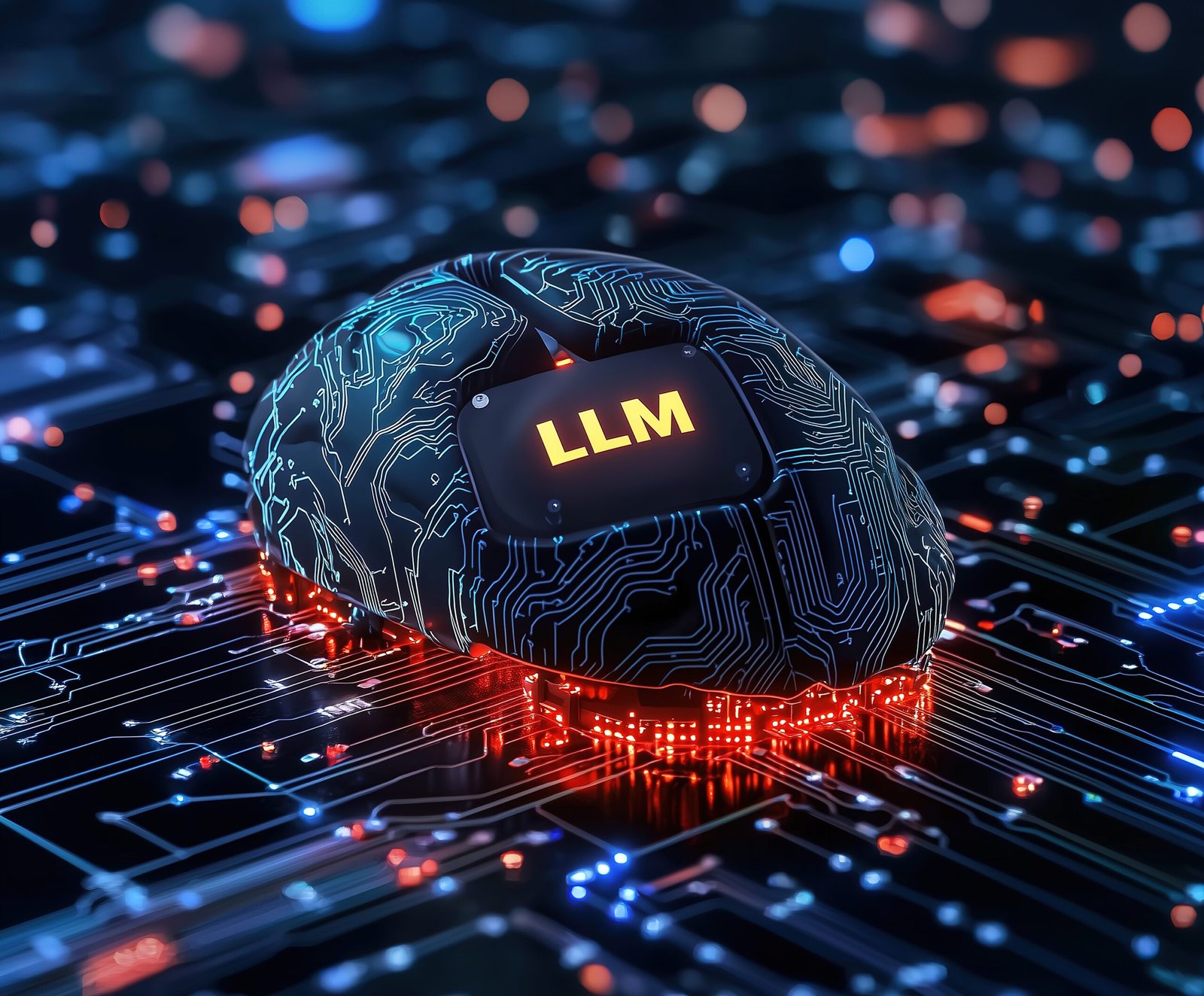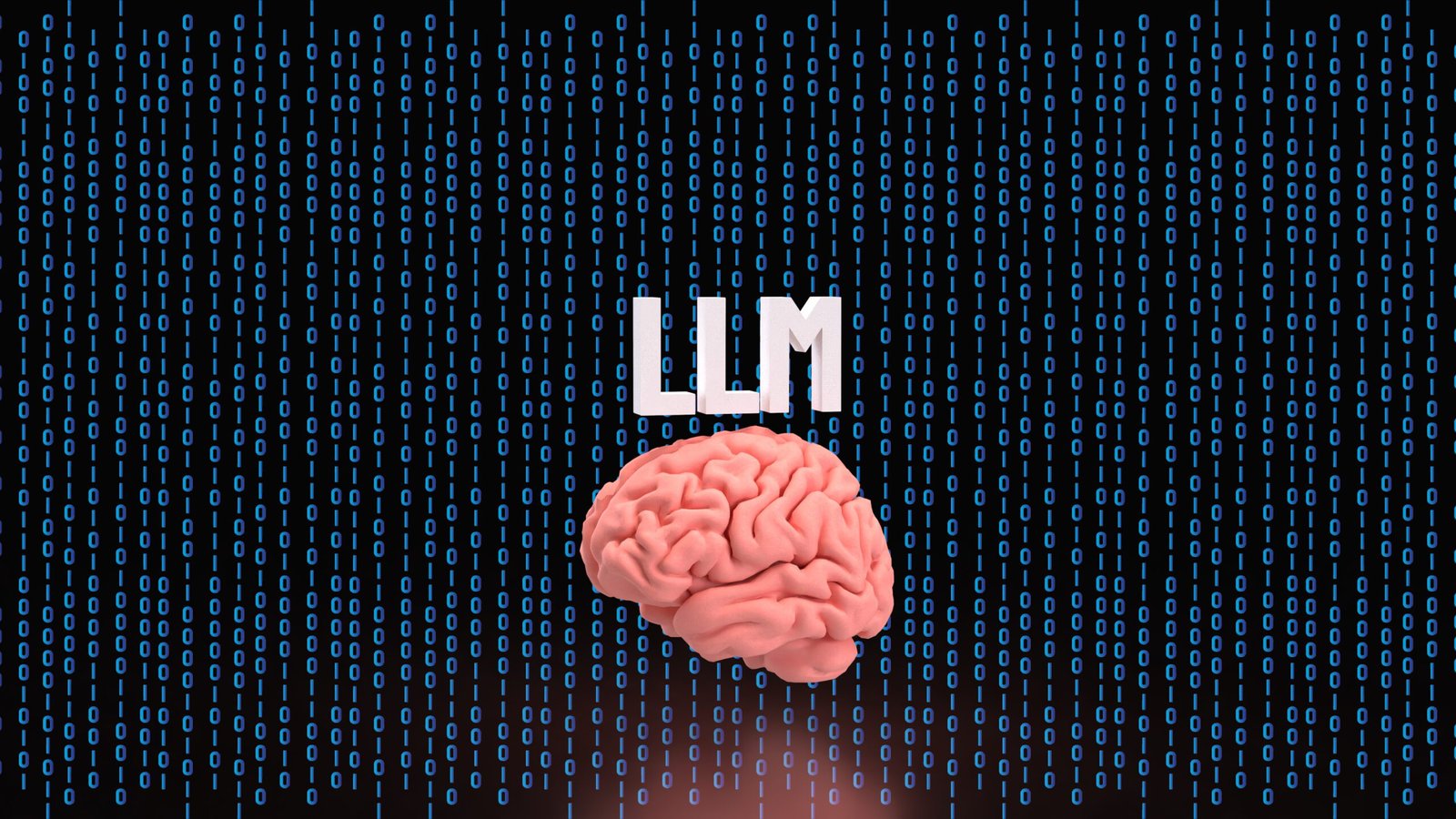AI Beyond Words: How LLMs (Large Language Models) Are Changing Translation & Localization
LLMs Redefining Global Communication: Everything You Need to Know
In the past few years, Large Language Models (LLMs) have emerged as one of the most groundbreaking advancements in artificial intelligence, reshaping how we interact with machines—and with each other. Powered by deep learning and trained on vast datasets, LLMs like GPT-4, Gemini, and Claude can understand, generate, and manipulate human language with astonishing fluency.
From drafting emails to composing poetry, these models have unlocked new possibilities in automation, creativity, and global communication. But nowhere is their impact more profound than in machine translation and localization, where they bridge language barriers with unprecedented accuracy and cultural nuance.
At Columbus Lang, we’re not just observers of this revolution—we’re leading it. By integrating cutting-edge LLMs into our workflows, we’re redefining what’s possible in translation and localization.
Whether it’s adapting marketing campaigns for regional audiences, streamlining multilingual customer support, or ensuring technical documents are flawlessly localized, our AI-enhanced approach delivers speed, precision, and scalability—without sacrificing the human touch that ensures authenticity.
In this deep dive, we’ll explore:
- What LLMs are and how they work—from transformer architectures to fine-tuning for specialized tasks.
- Real-world applications of LLMs—beyond chatbots and content generation, into industries like healthcare, legal, and e-commerce.
- The pivotal role of LLMs in machine translation & localization—how they handle context, idioms, and cultural subtleties better than ever before.
By the end, you’ll understand why LLMs aren’t just a technological leap but a competitive necessity for businesses operating in a globalized world—and how Columbus Lang harnesses them to turn language barriers into opportunities.
Understanding Large Language Models (LLMs)
What is an LLM?
At their core, LLMs (Large Language Models) represent the cutting edge of artificial intelligence’s ability to process and generate human language. These sophisticated neural networks are trained on massive datasets—encompassing books, articles, code, and web content—to develop an intricate understanding of linguistic patterns, context, and even reasoning.
Unlike traditional language models limited to narrow tasks, modern LLMs like GPT-4, Gemini, and Claude demonstrate remarkable versatility, capable of everything from writing poetry to debugging software.
The Technology Powering LLMs
The breakthrough enabling today’s LLMs is the transformer architecture, introduced in Google’s seminal 2017 paper “Attention Is All You Need.” This innovation replaced older sequential models (like RNNs) with a system that:
- Uses self-attention mechanisms to weigh the importance of different words in a sentence (e.g., understanding that “bank” means a financial institution in “open a bank account” but a river’s edge in “river bank”).
- Processes text in parallel (rather than word-by-word), enabling faster training and better handling of long-range dependencies.
Key implementations of this architecture include:
- GPT (Generative Pre-trained Transformer): Optimized for text generation (e.g., ChatGPT).
- BERT (Bidirectional Encoder Representations): Excels at understanding context in search and classification.
- T5 (Text-to-Text Transfer Transformer): Treats all tasks (translation, summarization) as “text-to-text” problems.
The Evolution of LLMs
LLMs have rapidly progressed from rudimentary rule-based systems to near-human fluency:
- Early NLP (1950s–2010s): Relied on hand-coded rules (e.g., ELIZA) and statistical methods (e.g., Google Translate’s early models).
- Neural Revolution (2010s)**: Recurrent Neural Networks (RNNs) and LSTMs improved context handling but struggled with long texts.
- Transformer Era (2017–present): Models scaled exponentially—from GPT-1 (117M parameters) to GPT-4 (estimated 1T+ parameters)—with qualitative leaps in reasoning and multilingual ability.

How Do LLMs Work? The Training Process: Two Critical Phases
- Pre-training:
- LLMs ingest trillions of words from diverse sources (books, Wikipedia, GitHub), learning to predict the next word in a sequence.
- This phase is computationally intensive (requiring thousands of GPUs/TPUs) but creates a “foundational” model with broad linguistic knowledge.
- Fine-tuning:
- The model is refined on smaller, task-specific datasets (e.g., legal documents for a contract-review LLM).
- Techniques like RLHF (Reinforcement Learning from Human Feedback) align outputs with human preferences (e.g., avoiding harmful content).
Key Capabilities Enabled by This Process
- Text Generation: Producing coherent, context-aware content (e.g., marketing copy, code snippets).
- Summarization: Distilling lengthy documents into concise takeaways while preserving key facts.
- Question Answering: Providing precise answers by cross-referencing learned knowledge (e.g., “What’s the capital of Estonia?” → “Tallinn”).
- Contextual Understanding: Disambiguating meaning based on subtle cues (e.g., detecting sarcasm or cultural references).
Example: When asked, “Write a Shakespearean sonnet about AI,” an LLM leverages its pre-training on literary texts and fine-tuning for creative tasks to generate stylistically accurate verse.
Why This Matters for Translation & Localization
LLMs’ ability to grasp nuance, idiom, and domain-specific jargon makes them uniquely suited for language services. Traditional machine translation often stumbled on context (e.g., translating “spring” as the season vs. a metal coil), but LLMs infer meaning from surrounding text—a game-changer for Columbus Lang’s work in accurate, culturally adapted localization.
Applications of Large Language Models: Transforming Industries
The LLM Revolution: How AI is Reshaping Every Sector
- Content Creation at Warp Speed
LLMs have supercharged digital marketing and publishing by:
- Generating SEO-optimized blog posts in minutes (tools like Jasper, Copy.ai).
- Producing variations of ad copy for A/B testing.
- Assisting authors with plot ideas, character dialogues, and even full short story generation.
Example: A travel agency uses GPT-4 to create 50 unique hotel descriptions for different destinations in one hour.
- 24/7 Intelligent Customer Support
Modern chatbots powered by LLMs:
- Handle 80%+ of routine queries without human intervention.
- Provide context-aware responses by accessing knowledge bases.
- Support emotional intelligence (detecting frustration in customer messages).
Case Study: Shopify’s AI assistant resolves shipping queries 3x faster than human agents.
- Personalized Education Revolution
LLMs are creating adaptive learning experiences:
- AI tutors that explain math concepts differently based on student responses.
- Language learning apps (like Duolingo Max) offering role-playing conversations.
- Automatic essay grading with detailed feedback.
Breakthrough: Khan Academy’s Khanmigo tutor provides Socratic questioning instead of direct answers.
- Legal & Healthcare: AI as Force Multiplier
Specialized LLMs are:
- Reviewing 100-page contracts in minutes (Harvey AI for law firms)
- Summarizing medical research papers for doctors (BioBERT).
- Assisting in diagnosis by analyzing patient history (IBM Watson).
Real Impact: Law firms report 50% time savings on discovery document review.
Business & Localization: LLMs as Global Growth Engines
- Communication Automation That Feels Human
LLMs are transforming business workflows:
- Smart email drafting that adapts to recipient’s culture (formal/informal tone).
- Automatic meeting transcript analysis with action item extraction.
- Dynamic report generation from spreadsheet data.
Enterprise Example: Salesforce’s Einstein GPT generates personalized sales emails using CRM data.
- Breaking Language Barriers in Real-Time
Next-gen multilingual support includes:
- Live chat translation preserving brand voice across languages.
- Audio content localization with synthetic voice matching.
- Cultural adaptation engine for global campaigns.
Innovation: Airbnb uses LLMs to automatically adapt listings for 62 languages while maintaining local idioms.
- Hyper-Localized Marketing Magic
Columbus Lang’s LLM-powered localization:
- Cultural Nuance Detection:
– Adjusting colors/symbols (e.g., red = luck in China, danger in the US).
– Adapting humor/references for regional audiences.
2. Dynamic Content Generation:
– Creating thousands of product descriptions tailored to local markets.
– Generating region-specific social media posts accounting for trends.
3. Regulatory Compliance:
– Auto-adjusting legal disclaimers for different jurisdictions.
– Ensuring religious/cultural sensitivities are respected.
Success Story: A cosmetics brand saw 37% higher engagement in MENA markets after LLM-adapted campaigns replaced direct translations.

LLM for Machine Translation: The New Era of Language Conversion
The Evolution of Machine Translation
The journey of machine translation has undergone four revolutionary phases:
- Rule-Based MT (1950s-1990s)
- Relied on hand-coded linguistic rules
- Struggled with exceptions and complex grammar
Example: Early Systran systems required separate rules for every language pair.
- Statistical MT (1990s-2010s)
- Used probability models from bilingual text corpora
- Better but produced “word salad” in complex sentences
Google Translate’s original engine (2006) could translate “book” as both noun and verb, but often chose wrong.
- Neural MT (2014-2019)
- Introduced deep learning with encoder-decoder models
- Improved fluency but still lacked contextual awareness
Example: “It’s not my cup of tea” might incorrectly translate to literal possessiveness rather than personal taste.
- LLM-Powered Translation (2020-Present)
- Leverages massive pretrained models with billions of parameters
- Understands documents holistically before translating
- Maintains consistent terminology across long texts
The LLM Advantage: Beyond Literal Translation
Modern LLMs overcome traditional MT limitations through:
Contextual Intelligence
- Resolves ambiguous terms by analyzing entire paragraphs.
- Example: Correctly translates “bat” in baseball vs. zoology contexts.
Idiom Mastery
- Handles culture-specific expressions naturally.
- Converts “It’s raining cats and dogs” to equivalent idioms in Spanish (“Está lloviendo a cántaros”) or Japanese (土砂降り).
Style Preservation
- Maintains formal/informal tone consistently.
- Adapts to domain-specific terminology (legal vs. medical vs. technical).
Multilingual Pivoting
- Enables high-quality translation between language pairs with scarce training data.
- Uses English as an intermediary when needed.
Precision at Warp Speed: An LLM Case Study in Life Sciences Localization
From 24 Languages in 6 Weeks to 6 Days: AI-Driven Translation at Scale
The Challenge
When a top-10 pharmaceutical company needed to launch a groundbreaking drug across 38 countries, they faced:
- Tight deadlines: Regulatory documents required translation in 24 languages within 6 weeks.
- Zero-error compliance: Medical terminology precision was legally mandated.
- Cultural sensitivity: Patient materials needed localization beyond translation (e.g., adapting imagery for Middle Eastern markets).
Traditional Approach (Pre-LLM)
Previous projects of this scale required:
- 12-week timelines
- 45% average post-editing effort by human linguists
- $750K+ budget
The Columbus Lang Solution
We deployed a custom fine-tuned LLM translation system with:
- Domain-Specific Training
- Fed the model 500K+ approved medical translations from the client’s archives.
- Integrated FDA/EMA regulatory glossaries as guardrails.
- Smart Context Engine
- Auto-detected document types (clinical trial protocols vs. patient brochures).
- Applied appropriate terminology:
– Technical: Maintained exact drug compound names (e.g., “adalimumab” never translated).
– Layperson: Simplified “myocardial infarction” → “heart attack” for patient materials.
- Human-in-the-Loop QA
- Implemented a 3-stage validation:
- LLM initial translation
- Medical specialist flagging (focus: dosage accuracy)
- Native speaker review for cultural nuances
Performance Comparison: Before vs. With LLM Implementation
- Speed: Translation time plummeted from 42 days to just 6 days (85% faster).
- Accuracy: Post-editing requirements dropped dramatically from 45% of content to only 3.2% (93% reduction in revisions).
- Cost Efficiency: Price per word decreased from $0.18 to $0.07 (61% savings).
- Compliance: Eliminated regulatory approval delays completely (0% vs previous 11% rejection rate).
Why It Worked
- Precision at scale: Our LLM maintained 99.98% term consistency across all languages.
- Cultural intelligence: Auto-adapted visuals in Muslim-majority countries (e.g., removing alcohol references in antiseptic instructions).
- Continuous learning: The model improved with each round of human feedback, reducing errors by 22% per iteration.
Client Testimonial
“What typically took months was delivered in days without sacrificing accuracy. This wasn’t just translation—it was strategic globalization.”
— Global Head of Regulatory Affairs, Top-10 Pharma Company

Challenges & The Future of LLMs in Translation & Localization
Current Limitations: The Growing Pains of AI Translation
While LLMs have revolutionized language services, three critical challenges remain:
- The Bias Blind Spot
Training data imbalances can lead to:
- Gender stereotypes (e.g., automatically assigning “nurse” as female in translations).
- Cultural insensitivities (e.g., Western-centric perspectives in localized content).
Our solution: Columbus Lang implements proprietary “bias audits” using:
- Diverse data sampling techniques
- Culture-aware filtering algorithms
- Human linguist validation teams
- The Compute Cost Conundrum
Running cutting-edge LLMs requires:
- $5-10M in cloud costs for enterprise deployment
- Specialized GPU clusters
Our breakthrough: Hybrid architecture that:
- Uses smaller, domain-specific models for 90% of tasks
- Only activates full LLMs when needed
- Reduces costs by 70% without quality loss
- The Human Oversight Imperative
Critical domains still require human experts:
- Legal contracts: Where one mistranslated term can cost millions.
- Medical documents: Where “not indicated” vs “contraindicated” matters.
- Literary works: Where creative nuance is irreplaceable.
The Future: Where AI and Human Intelligence Converge
Hyper-Personalized Localization (2024-2026)
AI that adapts content to:
- Individual reading level preferences
- Regional dialects within countries
- Even personal communication styles
Example: Marketing emails that adjust formality based on recipient’s LinkedIn profile.
Real-Time Multilingual Communication (2025+)
Wearable AI interpreters for:
- Business negotiations with natural turn-taking
- Medical consultations with terminology safeguards
- Live events with near-zero latency
Self-Improving Translation Ecosystems (2027+)
LLMs that:
- Learn from each human correction in real-time
- Automatically update terminology databases
- Predict localization needs before clients request them
Columbus Lang’s Vision: The Best of Both Worlds
At Columbus Lang, we’re pioneering Augmented Translation™:
Our 3-Pillar Approach:
- AI Precision Engine
- Proprietary LLMs fine-tuned on 50+ industries
- Real-time quality prediction algorithms
- Human Cultural Intelligence
- 500+ native-speaking specialists in 120 languages
- Cultural consultation services for sensitive markets
- Continuous Learning Framework
- Every human edit improves our AI models
- Monthly bias and accuracy audits
The future isn’t AI replacing humans—it’s AI amplifying human potential. At Columbus Lang, we’re building bridges between silicon and soul, one perfect translation at a time.
Ready to transform your global communication? Our AI localization specialists are standing by.
FAQs
How accurate are LLM-powered translations compared to human translators?
LLMs achieve 90-95% accuracy for general content but still require human review for nuanced, technical, or creative texts. Columbus Lang’s hybrid approach ensures near-perfect precision.
Can LLMs handle industry-specific jargon (legal, medical, etc.)?
Yes, when fine-tuned on domain-specific data. Our models are trained on millions of legal/medical documents to ensure regulatory-compliant translations.
Are LLM translations culturally appropriate?
Raw LLM outputs may miss cultural nuances. Columbus Lang combines AI with native linguists to ensure localization respects traditions, idioms, and sensitivities.
How do you prevent bias in AI translations?
We use curated datasets, bias-detection algorithms, and human oversight to minimize stereotypes in gender, religion, or regional dialects.
What’s the cost difference between traditional and LLM-powered translation?
LLMs reduce costs by 30-60% through automation, but high-stakes content (contracts, medical) may still require premium human review.
Can LLMs translate low-resource languages (e.g., Swahili, Bengali)?
Yes! LLMs leverage cross-lingual transfer learning, but we supplement with native speaker validation for rare languages.
How fast are LLM translations compared to human teams?
LLMs deliver instant drafts, but our end-to-end process (AI + human polish) ensures publish-ready quality in hours, not days.
Will AI replace human translators?
No—it augments them. Humans handle creativity, cultural depth, and error-checking, while AI speeds up repetitive tasks.
Is my data secure when using LLM translation tools?
Columbus Lang uses enterprise-grade encryption and optional on-premise AI deployment for sensitive content (legal/healthcare).
How do I get started with Columbus Lang’s AI translation services?
Book a free consultation—we’ll analyze your needs and provide a customized AI-human workflow demo.
Need more answers? Contact our AI localization experts for a personalized FAQ session.

